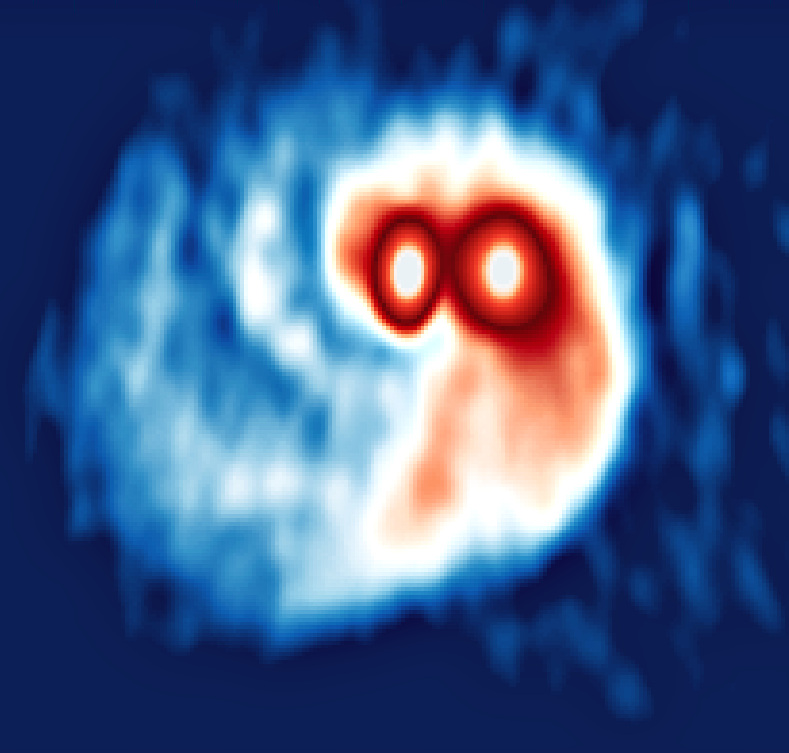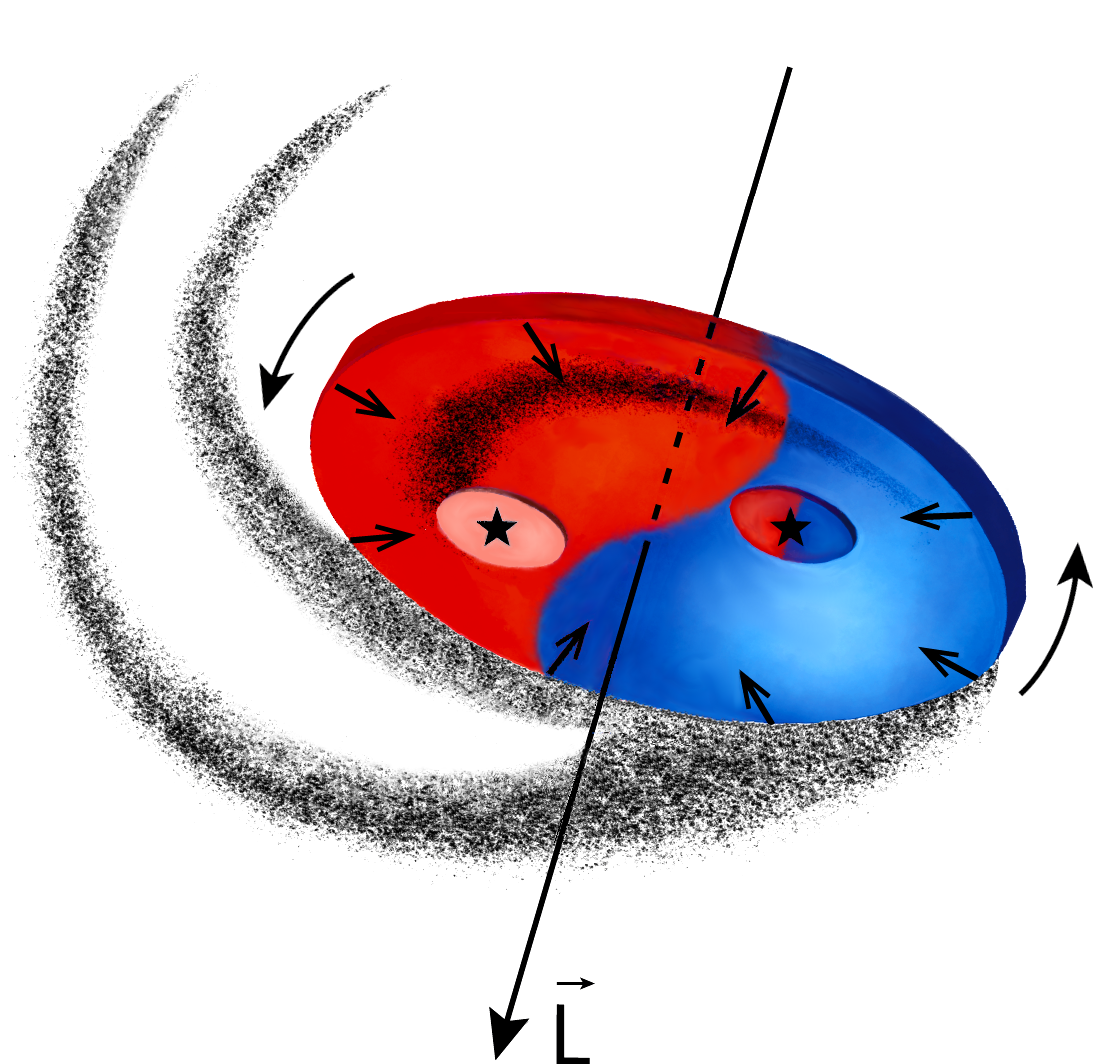Observing the very early stages of the formation of a circumbinary planetary system in SVS 13
- 1Instituto de Astrofisica de Andalucia, CSIC, Radioastronomia y Estructura Galactica, Spain (guillem@iaa.es)
- 2The University of Manchester
- 3Universitat de Barcelona
- 4Institut de Ciències de l'Espai (ICE-CSIC), IEEC
- 5Univ. Grenoble Alpes, Observatoire de Paris
- 6IRyA-UNAM
- 7ESO
- 8Academia Sinica Institute of Astronomy and Astrophysics, East Asian Observatory
The early stages of the formation of binary stellar systems are still rather poorly understood observationally, which contrasts with some significant recent improvements in numerical simulations. We present a comprehensive study with the VLA and ALMA of the close (separation = 90 au) proto-binary system SVS 13. Our very high sensitivity and spatial resolution observations trace the dust as well as the ionized and molecular gas in this system, reaching scales as small as ~10 au. We infer the orbital motion and masses of the two protostars. We image two circumstellar disks and a still-forming circumbinary disk with prominent spiral arms extending ~500 au. We study the 3D kinematics of the system and measure the physical properties of the disks. We also find evidence for variation of chemical properties on scales of a few tens of au. Finally, we will discuss on how the properties of the SVS 13 system compare with those of a few other protobinary systems that have been observed with a similar degree of detail, and with the predictions of numerical simulations. This kind of information provides some clues on the final configuration of planetary systems in binary systems.

ALMA observation of dust in the disks around SVS 13 (credit: A.K. Diaz-Rodriguez, G. Anglada 2022).

Cartoon model of the system. The red-blue colours indicate the motion of the gas. Red – away from us, blue – towards us. The peculiar yin-yang shape results from the combination of infalling and rotation motions (credit: A. K. Diaz-Rodriguez et al. 2022).
How to cite: Anglada, G., Diaz-Rodriguez, A. K., Blázquez-Calero, G., Osorio, M., Gómez, J. F., Fuller, G. A., Estalella, R., Torrelles, J. M., Cabrit, S., Rodríguez, L. F., Macías, E., Carrasco-González, C., Zapata, L. A., de Gregorio-Monsalvo, I., and Ho, P. T. P.: Observing the very early stages of the formation of a circumbinary planetary system in SVS 13, Europlanet Science Congress 2022, Granada, Spain, 18–23 Sep 2022, EPSC2022-1031, https://doi.org/10.5194/epsc2022-1031, 2022.

